What Is User-Centered Design (UCD)?
User-centered design (UCD) is a design process that pays attention to users' experiences as they are designed for them. It stresses putting users’ interests first when making things or systems, among other categories.
It involves observing people from the time they first meet with us until we get feedback after they use our offers, including all their needs, plans, desires, and conduct.
UCD has become increasingly important in product and service development as organizations focus solely on product features or profit margins to improve user experience.
Consequently, creating usable and desirable products hinged on user comments constitutes the essence of this strategy compared with the traditional model based on R&D, where there was no need for a user-centered design approach (UCD).
Source: Justinmind

However, implementing UCD while striving towards achieving business goals related to customer satisfaction may not be easy. In this regard, some of the steps followed by this framework include:
- gathering initial user requirements;
- prototype development along with testing designs;
- examining data along with feedback from users throughout the stages until its realization;
- results obtained from such analysis should assist in decision-making concerning any changes required based upon customers’ inputs and ideas;
- ultimately come up with subsequent versions or final ones.
This way, organizations can create better products that meet real customer needs — resulting in successful sales and usability metrics like satisfaction scores.
User-Centered Design Principles
The core principles of user-centered design guide designers and developers in creating products that truly meet user needs. Let's explore each principle in detail: user-centered design principles serve as fundamental guidelines for creating products that address users' needs and enhance their experiences.
1. Early and Continuous User Focus
This principle emphasizes the importance of involving users from the very beginning of the design process and maintaining that involvement throughout development.
- User Research: Begin with thorough user research and design techniques to understand your target audience’s needs, goals, and pain points. This may involve surveys, interviews, focus groups, and observational studies.
- User Personas: Based on your research, develop detailed user personas to keep the team focused on real user needs throughout the project.
- Continuous Feedback: Regularly seek user feedback at various stages of development, not just at the end. This could involve prototype testing, beta releases, or user advisory boards.
- Iterative Testing: Conduct usability tests with real users throughout development, using the results to inform design decisions.
By maintaining this early and continuous user focus, teams can ensure that the final product aligns with user needs and expectations.
Source: Medium
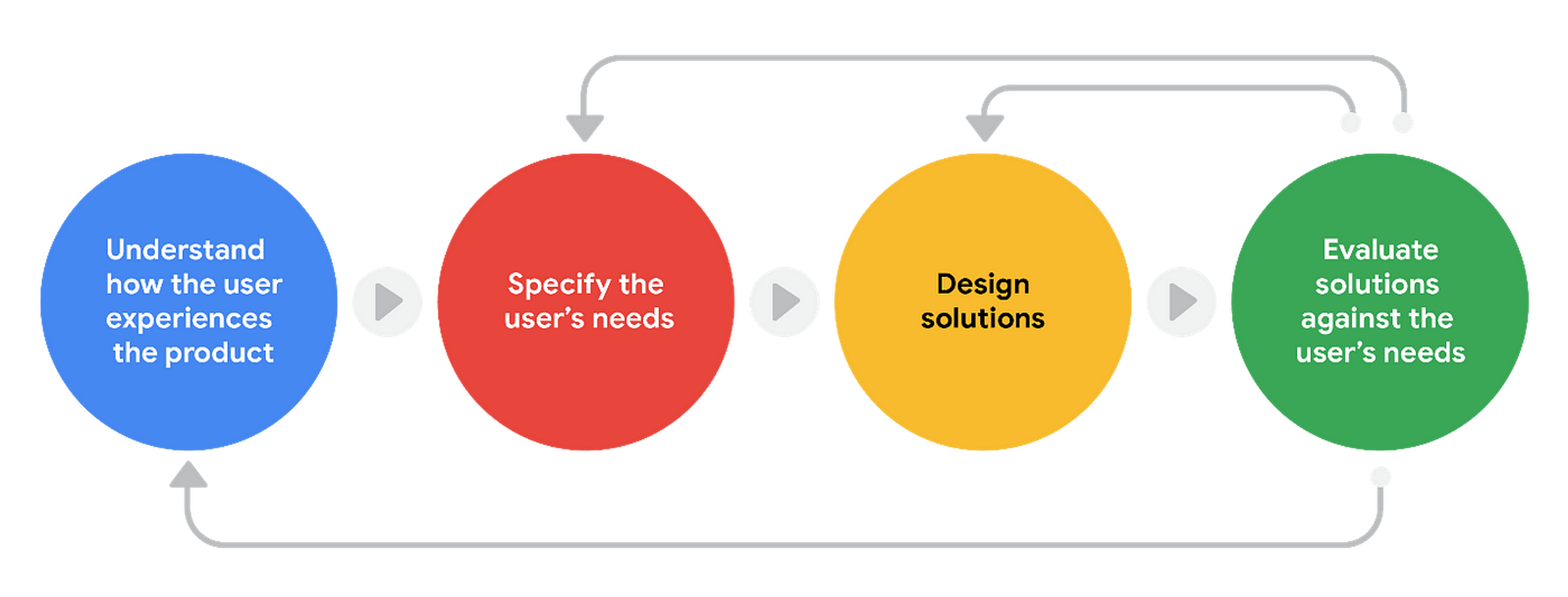
2. Iterative Design Process
The user-centered design takes an iterative approach, involving repeated cycles of design, testing, and refinement based on user feedback.
- Prototyping: Create prototypes of varying fidelity (from paper sketches to high-fidelity digital prototypes) to test ideas quickly and cheaply.
- Usability Testing: Regularly test prototypes with users to identify issues and areas for improvement.
- Incremental Refinement: Make incremental changes based on user feedback rather than waiting for a “big reveal” at the end of the process.
- Flexibility: Be prepared to revisit and revise earlier decisions as new insights emerge through the iterative process.
This approach allows for continuous improvement and helps catch and address usability issues early when they’re less costly to fix.
Source: Radiant Digital
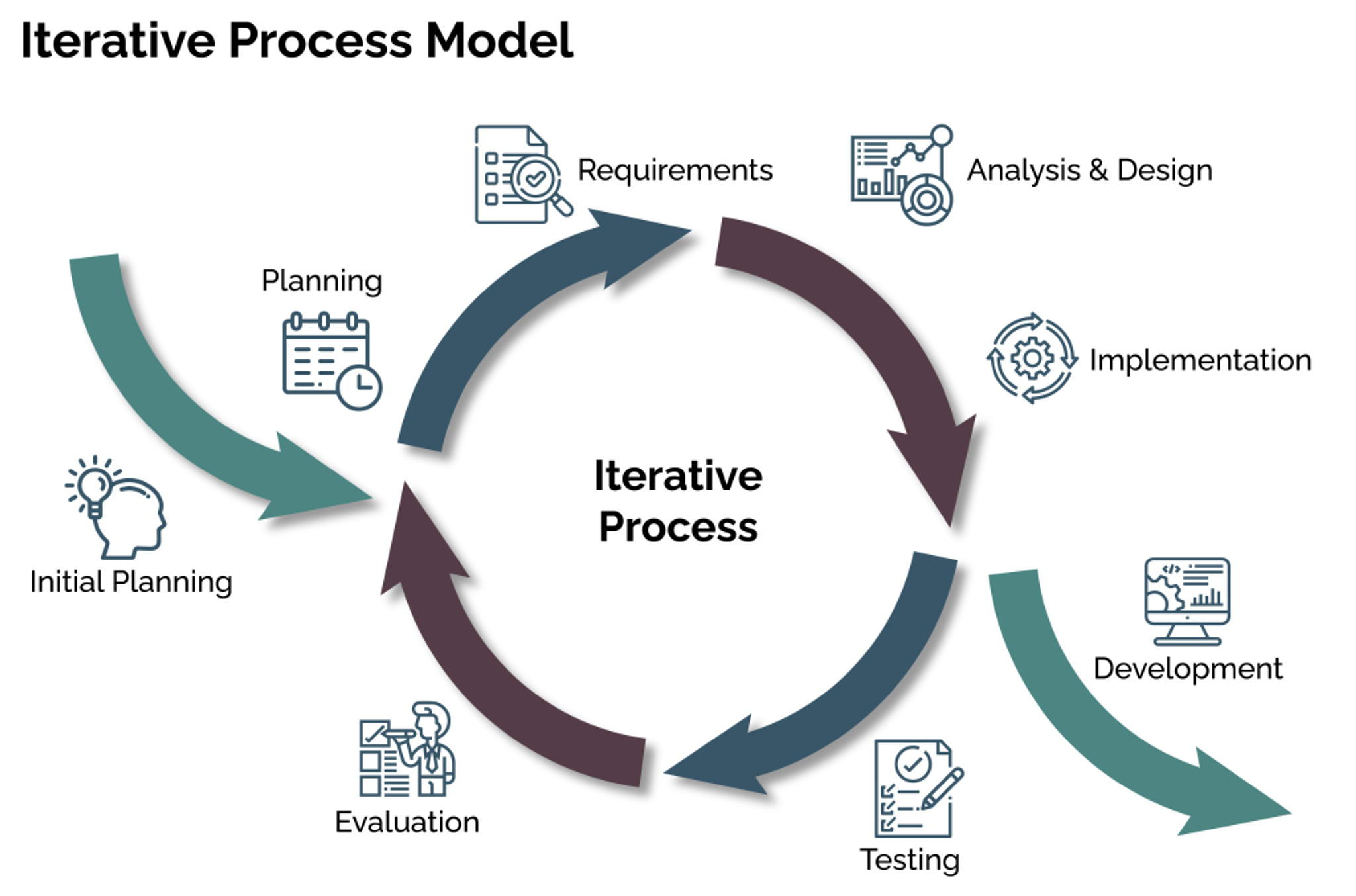
3. Empirical Measurement
Empirical measurement involves basing design decisions on observed user behavior and feedback rather than assumptions or opinions.
- Quantitative Data: Collect and analyze quantitative data such as task completion rates, time-on-task, error rates, and user satisfaction scores.
- Qualitative Insights: Gather qualitative insights through methods like think-aloud protocols, interviews, and open-ended survey questions.
- Benchmarking: Establish baseline measurements for key metrics at the start of the project to track improvements over time.
- A/B Testing: Use A/B testing to compare different design options based on actual user behavior.
By relying on empirical data, teams can make more informed decisions and objectively demonstrate the impact of design changes.
4. Holistic Design
Holistic design considers all aspects of the user’s experience, including cognitive, emotional, and physical factors.
Source: GeeksForGeeks

- User Journey Mapping: Create comprehensive user journey maps and user flows to understand the full context of user interactions with your product or service.
- Emotional Design: Consider the emotional impact of your design choices, aiming to create positive experiences that resonate with users.
- Accessibility: Ensure your design is accessible to users with diverse abilities and needs.
- Cross-Platform Consistency: Maintain a consistent user experience across different platforms and touchpoints.
- Integration with Broader Ecosystem: Consider how your product fits into the user’s broader ecosystem of tools and processes.
By taking a holistic approach, designers can create more comprehensive and satisfying user experiences that consider the full context of use.
Benefits of User-Centric Design
User-centered design (UCD) has many benefits for users and businesses. Implementing UCD focuses on customer needs, leading to an excellent user experience and increased customer satisfaction.
UCD leads to more usable and desirable products for end-users. In addition, this user-centered approach allows for an ongoing feedback loop with customers during each stage of the process, making it easier for them to integrate any changes needed to improve the product.
From a business standpoint, UCD's iterative process helps improve product success by ensuring they meet customer requirements before launch.
That being said, it is a well-known fact that products that take into account the user experience, starting from requirements gathering by design and development teams and ending with testing designs with users regularly or analyzing data along with feedback received from users at every point, have higher chances of doing well in terms of sales and usability metrics like satisfaction scores.
This means companies will increase their profits and decrease development costs over time through fewer errors or issues from launch onwards.
User-Centered Design Principles
User-centered design principles are a guide that sets out how to prioritize end users' needs and tastes when designing. In this case, designers strive to understand their customers' characteristics, what they do, where they come from, and why they want certain products or services.
The ultimate goal of any user-centered design should be to create functional, visually appealing, intuitive products. By involving an end user in the design process, a creator can obtain insights and feedback that help them make designs that meet their needs and effectively solve problems.
In the Lulo Bank project, we applied user-centered design principles to prioritize the needs and preferences of end users. Our design team created a functional, visually appealing, intuitive digital banking experience by deeply understanding customers' characteristics, behaviors, and motivations.
We aimed to develop a visual language that is both modern and straightforward. As the first digital bank in Colombia, we were responsible for designing each screen to deliver an intuitive and seamless user experience, making it easy for users to manage their finances.
Lulo Bank Design by Clay
User-centered design is based on several guiding principles:
User Involvement
One central user-centered design principle involves engaging the end user from start to finish. This entails researching, seeking opinions from real users, and testing prototypes with them.
Understanding User Needs
To create a good user design, designers must empathize with users. Understanding their requirements will help them figure out exactly what they expect or prefer before making what they think may be right for them.
Iteration
UCD is an iterative process whereby design is continuously improved through user feedback. This ensures constant improvement and a final product that meets consumers' expectations.
Source: Cuelogic
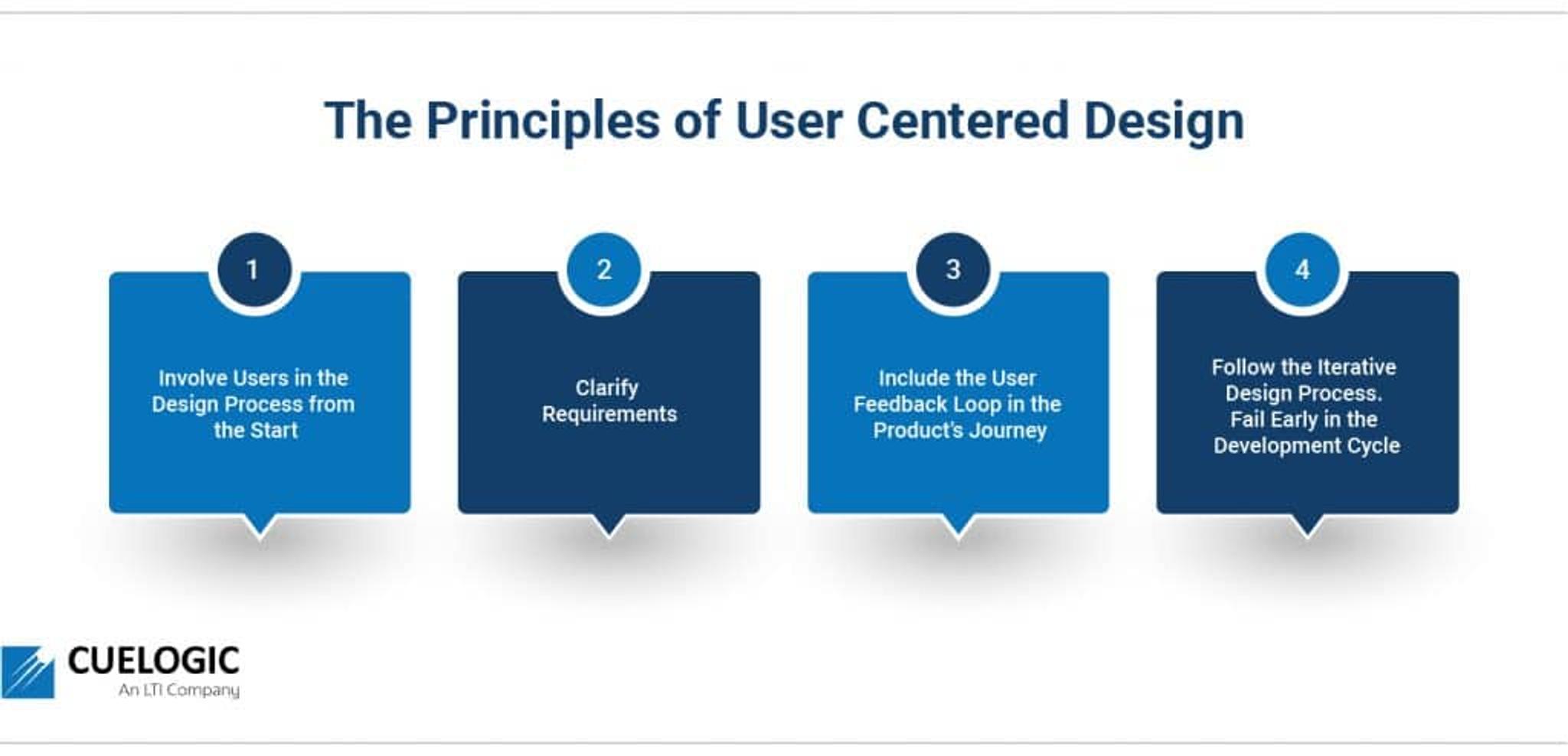
Accessibility
A good UCD should consider people who fall into different categories, such as those with disabilities or limitations. Such features must be integrated into the product designed to accommodate all categories of people who want to use it.
Consistency
A seamless and easily usable product requires uniformity in its approach. This can be either visual consistency (employing a similar color scheme, typography, etc.) or functional consistency (maintaining identical navigation across different product sections).
Usability
The primary objective behind user-centered design is the development of useful products. This implies designing products characterized by simplicity, efficiency, and effectiveness.
Flexibility
A good UCD should be able to adapt to different contexts or situations because users are not always the same. It must accommodate various user preferences and actions.
User-Centered Design Process
Source: Measuring U

Stakeholder Analysis
User-centered design is a process that involves stakeholder analysis. The most important part of this method is identifying key stakeholders and understanding their roles, interests, and requirements in designing any product or service. These stakeholders can include designers, developers, users, customers, business owners, and other project stakeholders.
In UCD, stakeholder analysis ensures that everyone involved with the project meets their needs. It also helps to define which focus groups and decision-makers will be responsible for various parts of design and development.
As far as developers are concerned, they need to know right from the start who the stakeholders are and what they want from them during the design process to realize collaboration between all parties.
For example, a user may require a feature that is technically impossible for the developer to implement, or a customer may have unrealistic expectations about what could have been achieved within a given time frame.
These issues can be identified early on using stakeholder analysis tools like workshops or interviews with stakeholders. This allows time for alternative designs that achieve both parties' goals before disagreements begin much later in development.
Source: Rob Hampson on Unsplash

A very useful way of creating products or services that everyone uses is to understand each stakeholder’s needs and expectations upfront through stakeholder analysis. Such an approach ensures that products will be successful in meeting both user needs and business requirements and objectives!
Contextual Inquiry and Research
An integral part of user-centered design is contextual inquiry and research, which informs the design process. In this case, the designer should understand where the product/service will be used to satisfy users’ needs more effectively.
For instance, if you want your product to fit into some specific environment, such as a hospital or military context, it might need certain features/functionalities to optimally work for its users, which without contextual inquiry would not have been discovered.
Contextual inquiry and research usually have three phases: observation, interpretation, and synthesis.
In the observation phase, researchers observe users performing tasks within their environment, noting any relevant information about how they interact with their environment and any other insights. This also helps identify potential user needs that might have been missed during other stages of analysis.
The second stage involves interpreting the data collected from the observations. Within this stage, behaviors and interactions in context are analyzed to identify common patterns/trends in user behavior that can inform design decisions.
Lastly, findings from research projects are synthesized during the synthesis phase into useful insights that can be utilized for the design decision-making process.
Source: Myriam Jessier on Unsplash

Designers who use contextual inquiry and research throughout the UCD process understand best how products should be designed for particular contexts. Through contextual research, one can create more customer-friendly products by meeting customer-specific needs more accurately than possible.
Generating Personas and Scenarios
Generating personas and scenarios are the main components of user-centered design (UCD), which helps identify what users need, prefer, and do. Personas are fictitious characters made up of real user data drawn from user interviews, surveys, or observations during Contextual Inquiry and Research.
They represent different kinds of users who interact with a product or service. By creating personas, designers can understand their target audience and design a product or service that meets users' needs more effectively.
Scenarios are stories about personas that show how they may use a product in different contexts based on their goal. Scenarios enable designers to consider all possible uses for a product before moving into designing mode. This helps ensure the design includes all the necessary features to support user goals more efficiently.
Source: Brooke Cagle on Unsplash

This is why generating personas and scenarios is an important part of UCD. It helps comprehend users’ behavior and requirements in particular situations, and it helps create products and services that will be useful and appealing to everyone, including developers.
Prototyping, Usability Testing, and Iteration
Prototyping, usability testing, and iteration are essential stages of UCD.
Prototyping entails developing a basic representation or blueprint of the product design to test its usability and functionality before finalizing it. This allows designers to find potential design problems early, saving time and money later on.
Prototypes can be used to evaluate whether users understand how a given product works and whether it is easy.
User testing enables designers to assess a prototype’s performance against user objectives or expectations. It helps discover some usability issues that might have been ignored during the prototyping stages.
User testing constitutes one important part of UCD. In this process, actual consumers provide valuable feedback on their experience using the developed product or service. Such feedback usually leads to better designs that effectively meet user satisfaction and needs.
In conclusion, UCD also involves iteration. An iterative design process is a cyclical approach in which modifications are made based on user feedback gathered during testing.
Iteration ensures constant improvement of products and services to more appropriately meet user demands at different development stages. By frequently iterating as they proceed with UCD processes, designers can make offerings that match business objectives while satisfying target-audience preferences, resulting in successful outcomes for all stakeholders.
Source: Amélie Mourichon on Unsplash

Applying user-centered design approaches such as contextual inquiry and research, generating personas and scenarios, prototyping, testing, and Iteration in decision-making concerning design will produce products or services that are more effectively tailored to meet users’ requirements. This helps designers focus and deliver successful outcomes for users and businesses.
Integration and Deployment Strategies
User-centered design involves integration and deployment strategies to ensure that the product or service is delivered in a way that meets user needs. Integration involves combining different modules, services, and other components into an effective unified system.
This allows for changes to be made more quickly and efficiently, improving flexibility for features and functionality. On the other hand, deployment strategies focus on determining the most efficient way of delivering a product or service to users.
This includes deciding which platforms the product will be available, how updates should be managed, and whether additional support services are required.
Designers can ensure their products or services are easily accessible to users by creating effective integration and deployment strategies during the UCD process.
For example, when developing products for mobile devices such as smartphones or tablets, designers must consider compatibility with various operating systems, making it necessary to have designs that adapt across screens of different sizes.
Additionally, designers should think about how updates will be handled over time so that users can keep track of new features and fixes without interruption in service provision.
Lastly, additional support services such as user documentation or FAQs provide access to information not initially featured while designing the product or service.
Source: Annie Spratt on Unsplash

In all stages of development, from creation down to delivery, integration and deployment strategies play an important role in UCD by ensuring that products meet user needs. By doing this early in the UX design process, these essential elements will guarantee the successful delivery of their products, thus providing an amazing experience throughout.
Challenges and Best Practices in UCD
While User-centered design offers numerous benefits, it also comes with its own set of challenges. Understanding these challenges and implementing best practices can help teams navigate the UCD process more effectively.
Challenges in UCD
Time and Resource Constraints
User-centered design can be a time-consuming and resource-intensive process. Conducting thorough user research, creating prototypes, and running multiple iterations of testing all require significant investment. This can be particularly challenging for smaller companies or teams with limited budgets. However, the long-term benefits of creating a product that truly meets user needs often outweigh these initial costs.
Stakeholder Buy-In
Convincing stakeholders of the value of UCD can be a significant hurdle, especially when it may extend project timelines or increase initial costs. Some stakeholders may be resistant to change or skeptical about the return on investment of UCD practices. Overcoming this challenge often requires clear communication of the benefits of UCD, including reduced costs of later changes, increased user satisfaction, and potential competitive advantages.
Source: Toshiba
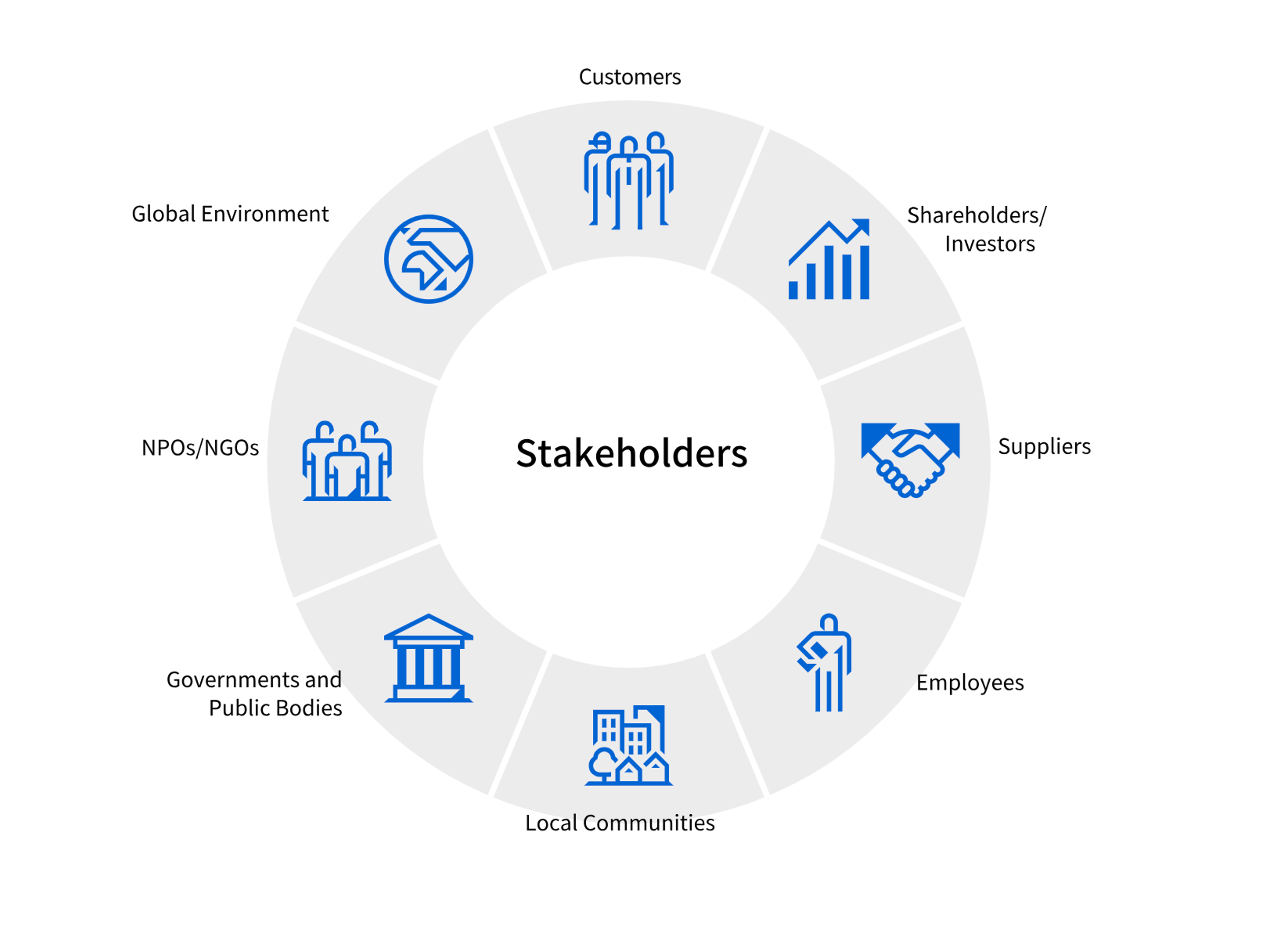
Balancing Diverse User Needs
Products often serve diverse user groups with varying needs, preferences, and levels of expertise. Balancing these sometimes conflicting requirements can be complex. For example, creating an interface that is simple enough for novices but powerful enough for experts requires careful consideration and often involves design trade-offs.
Overcoming Designer Bias
Designers and developers inevitably bring their own assumptions, preferences, and biases to a project. These can inadvertently influence design decisions, potentially leading to solutions that don't truly meet user needs. Continuously challenging these biases and maintaining a focus on empirical user data is crucial but can be psychologically challenging.
Keeping Pace with Technological Change
As technology evolves rapidly, UCD practices must adapt to new interfaces, interaction methods, and user expectations. This requires continuous learning and flexibility. For instance, the rise of voice interfaces, augmented reality, and artificial intelligence are all changing how users interact with technology, necessitating new approaches to UCD.
Best Practices in UCD
Establish Clear Goals
Establishing clear, measurable objectives is crucial before beginning any UCD process. These goals should align with both user needs and business objectives.
For example, a goal might be to "reduce the time it takes for new users to complete a purchase by 30%." Having specific, quantifiable goals helps guide the design process and provides benchmarks for measuring success.
Involve a Diverse User Group
To create truly inclusive designs, it is essential to involve a wide range of users in your research and testing processes. This diversity should encompass various demographics, abilities, and levels of expertise with your product or similar products. Including diverse users helps uncover broader needs and perspectives, leading to more universally usable designs.
Use a Mix of Research Methods
Combining various research methods provides a more comprehensive understanding of user needs and behaviors. Quantitative methods like surveys and analytics can provide broad insights and help identify trends.
Qualitative methods like interviews and usability testing offer deeper insights into user motivations and pain points. Using both in tandem allows for a more nuanced and complete picture of the user experience.
Create User Personas and Scenarios
Developing detailed user personas and usage scenarios helps maintain a user-centered focus throughout the design process. Personas are fictional but realistic representations of key user groups based on user research.
Source: WowMakers
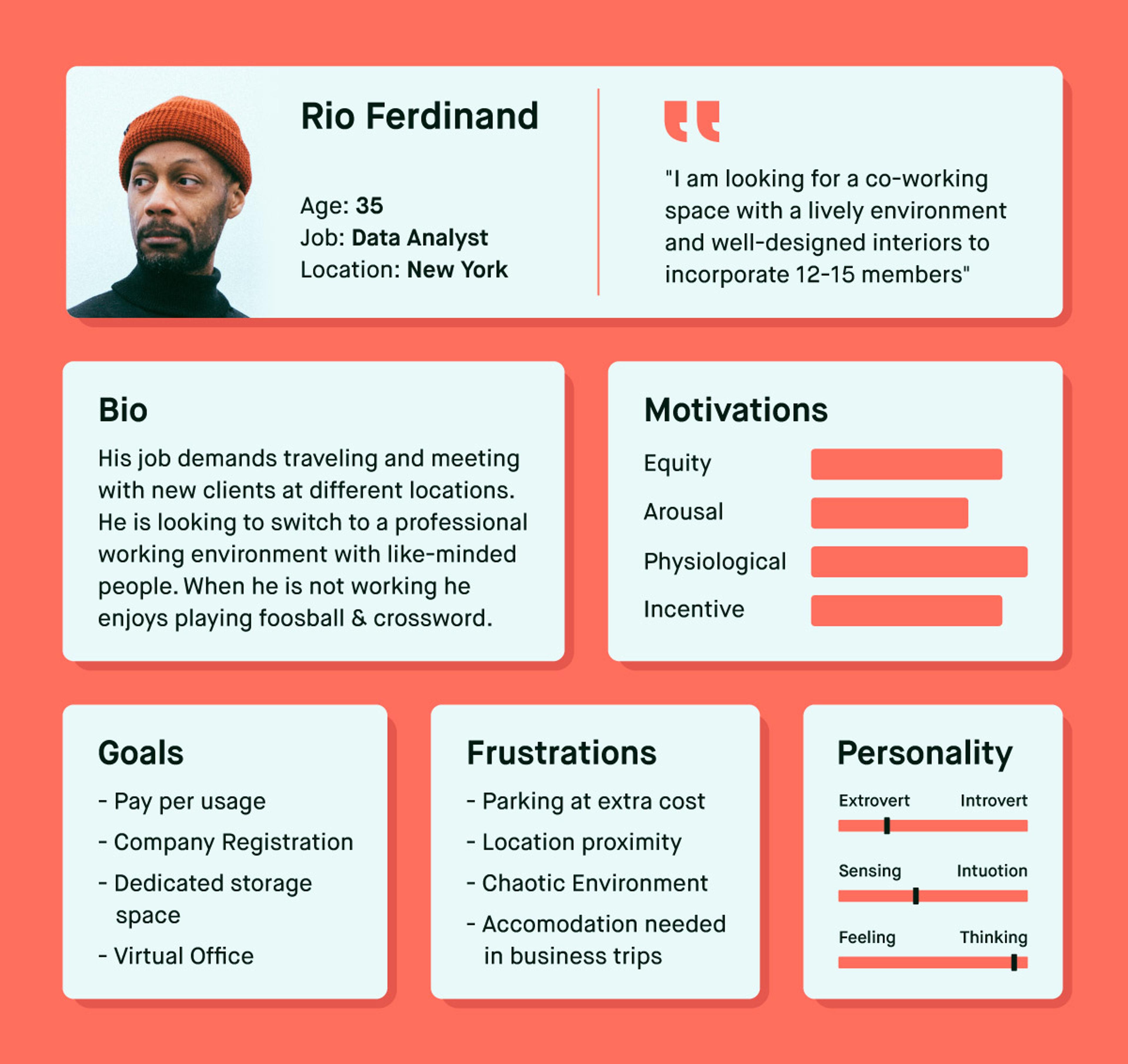
Prioritize Findings
Not all user feedback can or should be acted upon immediately. It's important to prioritize changes based on their potential impact on user experience and their feasibility, given project constraints.
This often involves balancing quick wins that can be implemented easily with more significant changes that may require more time and resources but could have a greater long-term impact.
Communicate the Value
Regularly sharing insights and improvements resulting from the UCD process with stakeholders is crucial for maintaining support and enthusiasm for UCD practices.
This could involve presenting user research findings, demonstrating how design changes have improved key metrics, or sharing user testimonials. Clear, ongoing communication helps justify the investment in UCD and builds a user-centered culture within the organization.
Foster a User-Centered Culture
Creating a truly user-centered product requires more than just following UCD processes—it requires building a culture where everyone in the organization considers the user perspective in their decision-making.
This involves educating team members about UCD principles, celebrating user-centered successes, and potentially reorganizing teams to facilitate user-centered practices better.
Embrace Continuous Learning
The field of UCD is constantly evolving, with new methodologies, tools, and best practices emerging regularly. Staying updated with these developments is crucial for maintaining an effective UCD practice.
This might involve attending conferences, participating in professional development courses, or setting aside time for the team to experiment with new UCD techniques. A commitment to continuous learning ensures that your UCD practice remains current and effective.
Read more
Conclusion: Ensuring Successful UCD Implementation
We hope this guide has given you a good overview of what UCD is all about and some steps involved when you carry out its implementation. The idea behind this is building a product around your customers so that they can get engaged while adopting it successfully. Good luck!


About Clay
Clay is a UI/UX design & branding agency in San Francisco. We team up with startups and leading brands to create transformative digital experience. Clients: Facebook, Slack, Google, Amazon, Credit Karma, Zenefits, etc.
Learn more

About Clay
Clay is a UI/UX design & branding agency in San Francisco. We team up with startups and leading brands to create transformative digital experience. Clients: Facebook, Slack, Google, Amazon, Credit Karma, Zenefits, etc.
Learn more



